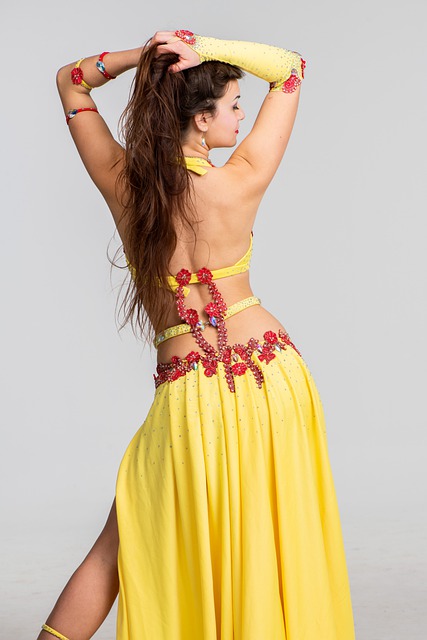Belly Dance: A bit of History
The belly dancing is an art of oriental origin, developed in the royal courts of the Middle East.
A feminine and elegant dance, a symbol of fertility and self-discovery, which has evolved over the centuries to the present day. In fact, belly dance has undergone various contaminations, which have led to the birth and development of different styles depending on the geographical area of origin.
This art is characterized by the rotating movements of the pelvis, sensual and sinuous, strictly connected to fertility and the cult of the Mother Goddess; precisely for this reason, it was practiced exclusively by women.
What is most striking about belly dance is the ability of those who practice it to control the movements of the various parts of the body .
There are different styles of oriental dance, which differ in music and movements, which can be slow and soft, or faster, lively and rhythmic.
Belly dance over time has become a real discipline, so much so that both in the gyms and in the dance centers you can find Arabic dance courses.
Practiced by more and more women, this art is an expression of femininity, power, fertility and abundance; moreover, today it is a means by which to increase one’s self-esteem, to know one’s body, to accept it and to rediscover its strength and beauty.
Belly Dance: What is it?
Belly dance, also known as Arab dance or oriental dance, originated in the Middle Eastern regions as an art form to accompany specific religious ceremonies.
This discipline was born as a symbol of strength, power and femininity, and is characterized on the one hand by elegant and sinuous movements that make the body fluid and harmonious, and on the other by real shots of the hips and bust that represent, instead, the martial and warrior element .
An engaging dance, full of sounds, Arabic music and colors capable of striking and awakening the energy flows and the female psyche.
Belly Dance Styles
There are various styles of belly dance depending on the region of diffusion.

Baladi
It is the style that represents popular dance. The movements are the same as in belly dance, but less refined.
The clothing consists of a very worked long dress called galabeya, enriched by a sash with coins and beads and a veil used as a headdress.
Dance with the sword
The Arabic name is raks al sayf; it is a very particular type, because the dancer performs a series of movements keeping the sword balanced on her head.
Dance with the stick
Born and spread in Upper Egypt, it consists in dancing with a stick. The dancer must move the stick horizontally, vertically and transversely, always in harmony with the movements of the body .
Dance with the cymbals
The dancer dances with cymbals, or small metal saucers, which are placed on the thumb and middle finger of both hands, to be moved and played to the rhythm of the music .
Dance with the veil
In this case we dance with the veil used as an accessory ; it is a decorative and sensual element that the dancer uses to fill the scene, covering and uncovering the body.
